Ekoï ‘s R Aero helmet has received plenty of attention of late, being worn in Grand Tours and other high profile races by the Arkéa–B&B Hotels, Lotto–Dstny, Cofidis, and Israel–Premier Tech team. Let’s see how it performs under the Cycling Weekly spotlight.
Construction
The Ekoï R Aero helmet is made in a pretty standard format, using EPS foam internally with a polycarbonate shell on the outer. This is very much the standard that the best road bike helmets adhere to. Other structural features are occipital adjustments at the rear, a Boa dial for retention, adjustable dividers and straps, and Fidlock magnetic buckle.
Ekoï states that the helmet passes CE 1078 + CPSC 1203 + rotational impact test according to future EN 1078 standards, although no VHT rating at present. Speaking with Ekoï, it explained that it did this via working on “EPS type, dimension and density, by creating a reinforced geometry that could withstand impacts and collapse where and when necessary.”
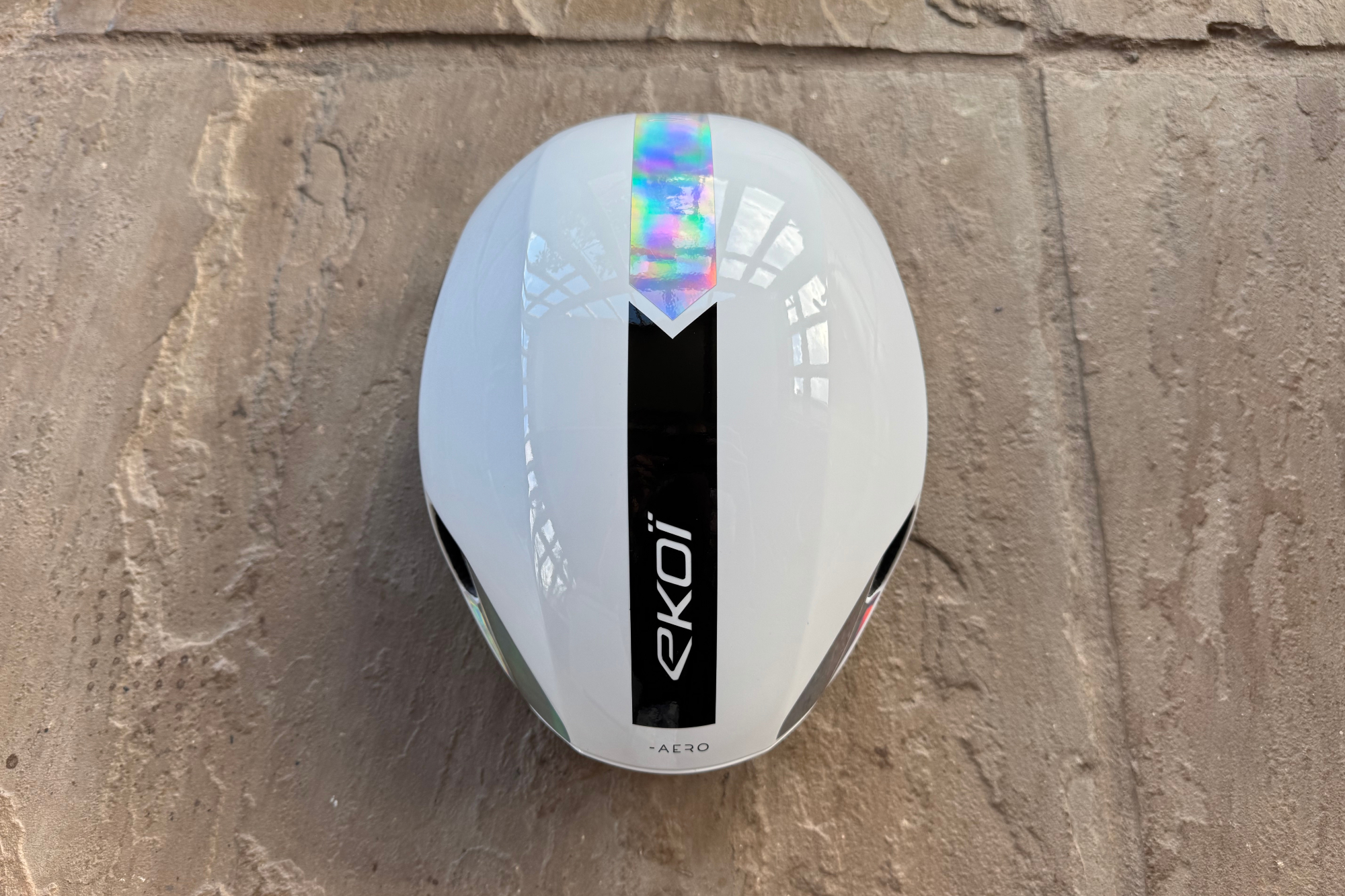
(Image credit: Future / Andy Turner)
Where things get interesting is with regards to the development of the helmet. The brief was to make the fastest and most balanced race helmet available. Ekoï didn’t set out to make the fastest helmet in one position, but rather something aerodynamically efficient. This means that it is fast over a range of positions, as well as having greater thermal regulation.
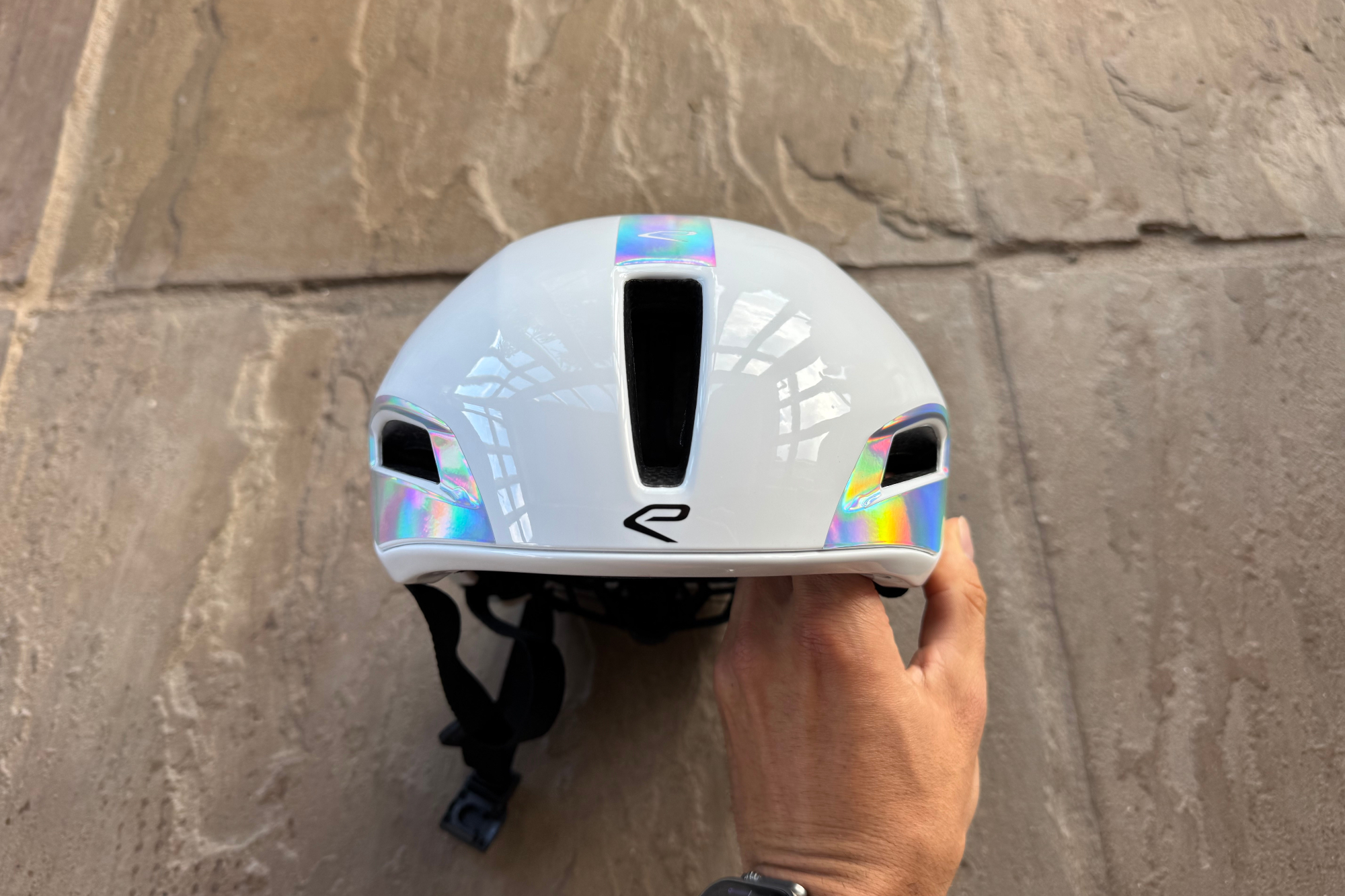
(Image credit: Future / Andy Turner)
To do this, Ekoï claims it took many competitor helmets, scanned them to create 3D models, and tested using a mix of CFD (computational fluid dynamics) and wind tunnel testing. It says, testing was conducted at 20, 45, 50, and 65kph and 0, 5, 10, and 20˚ YAW angles. Positions tested were sprint and effort (breakaway style) on a road bike and TT bike. Findings showed the R Aero was within a watt of the fastest competitors at 0˚ YAW but faster at higher angles. It did, they say, while also being 10% more efficient at heat transfer and 3% better than best aero/vented helmets.
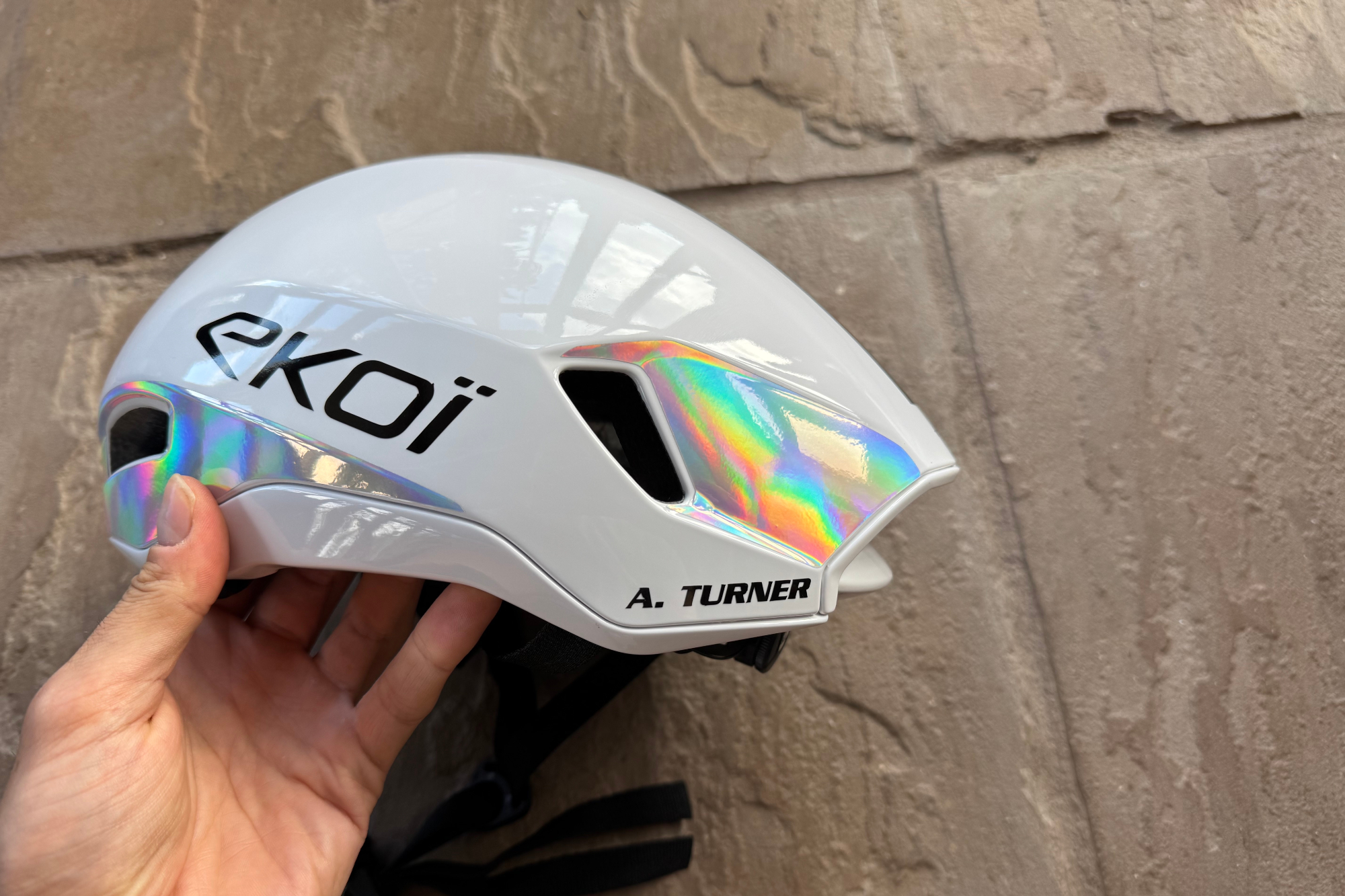
(Image credit: Future / Andy Turner)
If the claims are true, its likely due to the tear drop shape profile with one large vent at the centre in high pressure zones and an internal channel for this air to flow through to create a Venturi effect at the rear.
There are an additional two side vents for increased airflow and cooling. These vents can also be used for storing glasses. Interesting Ekoï developed this helmet alongside the S-Aero glasses, designed to save an additional handful of watts, while reducing wind noise around the ears and fitting in with the shape of the helmet perfectly.
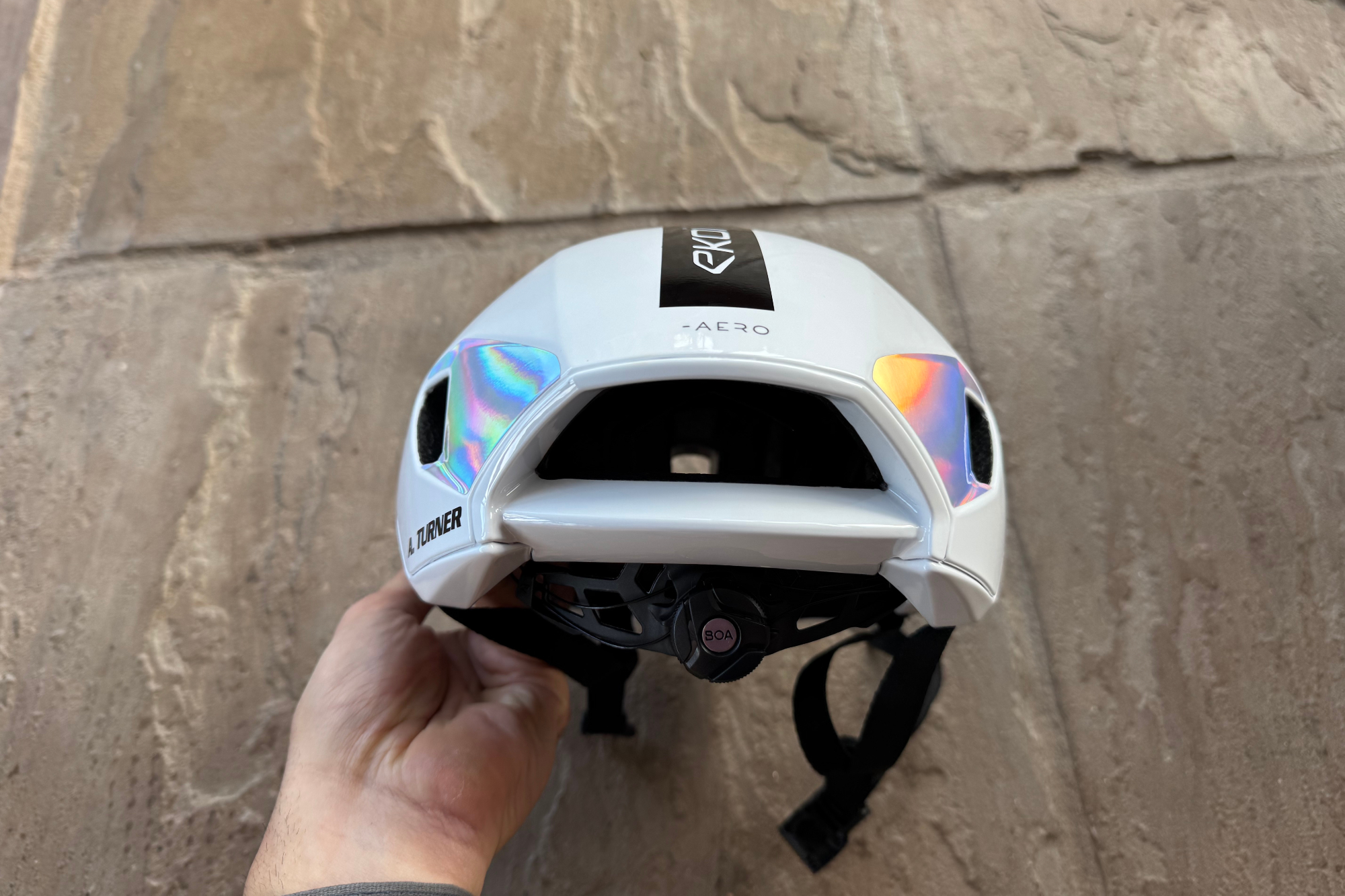
(Image credit: Future / Andy Turner)
Colour options vary significantly as you can get custom decal stickers including name stickers. At present there is White, Matte Black, and Matte Silver with different colour inserts available. Custom version allows for custom graphics, flags, and names with more options coming down the line.
Sizes are S, M, L and XL, with weight for a size medium being 280g.
The ride
Judging the aerodynamics of a helmet without wind tunnel testing is nearly impossible through perception, and requires some precise sensors and consistent weather conditions. It is however noticeable that compared to a non-aero vented helmet I usually use, my average road speeds across different routes are consistently higher with the R Aero.
Putting my hand behind the helmet I could feel accelerated airflow out the rear vent versus the surrounding air, indicating that a Venturi tunnel effect is in fact working.
There is an argument that the likes of the Kask Nirvana and Giro Aerohead could be faster options, but there are racing rule mandates incoming that may affect the use of TT helmets in road races and prevent ear coverings, or semi-coverings in the case of Kask. Ekoï specifically wanted to make this helmet future proofed to these possible incoming rule changes and that has to be taken into account when comparing against those models.
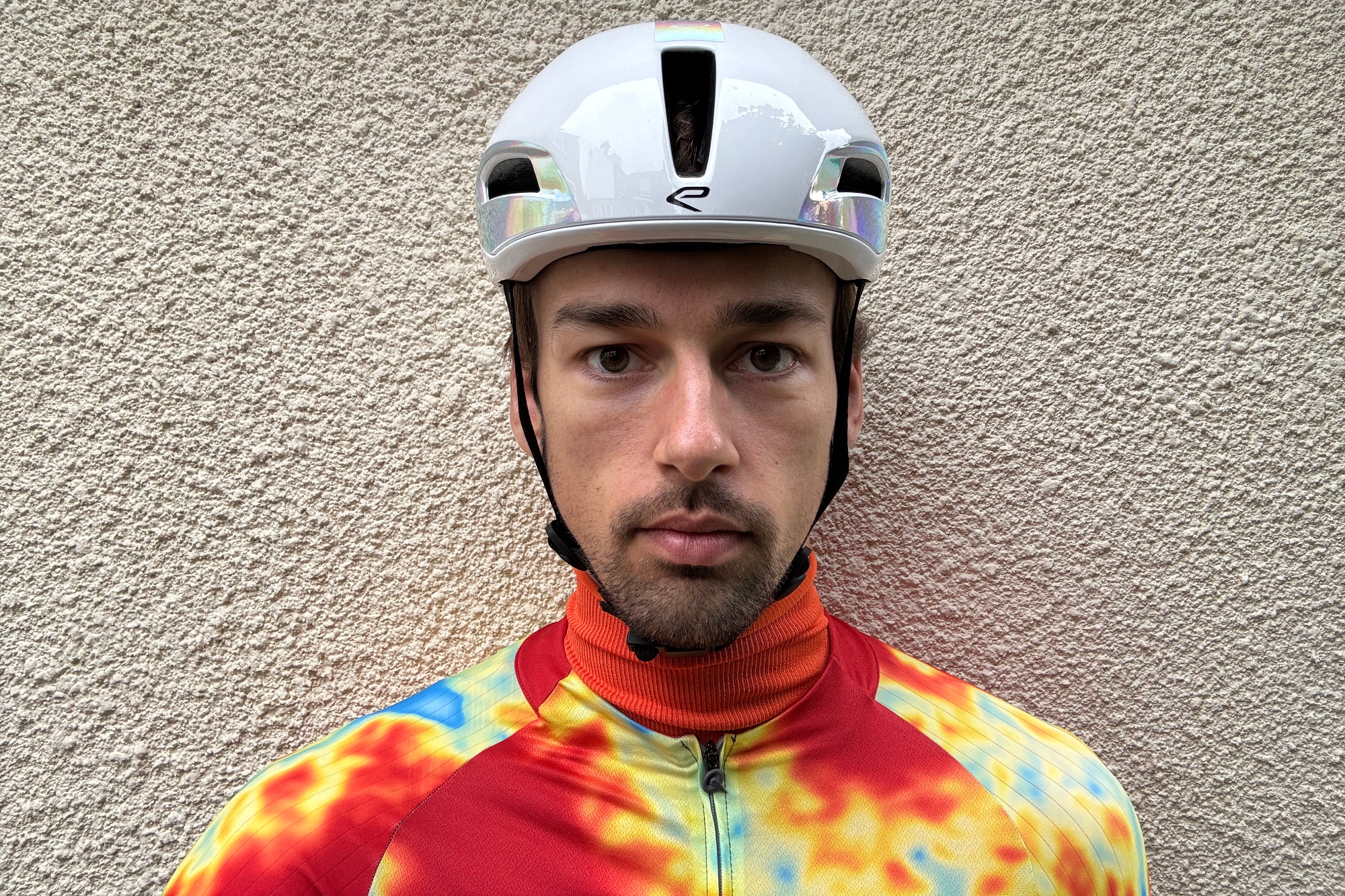
(Image credit: Future / Andy Turner)
The other main point of this helmet was to provide decent thermal management. Compared to the previous Ekoï Aerodinamica the helmet is far better vented at a broader range of speeds. It doesn’t have the best airflow at lower speeds, likely due to fewer vents and also not the deepest internal channelling. Here is where a helmet like the POC Procen Air is a surprisingly good performer as the large channels allow a lot of airflow even with more hair on your head. Hairless mannequins – common in helmet design tests – are not representative of people with hair on their heads, which tends to disrupt internal airflow.
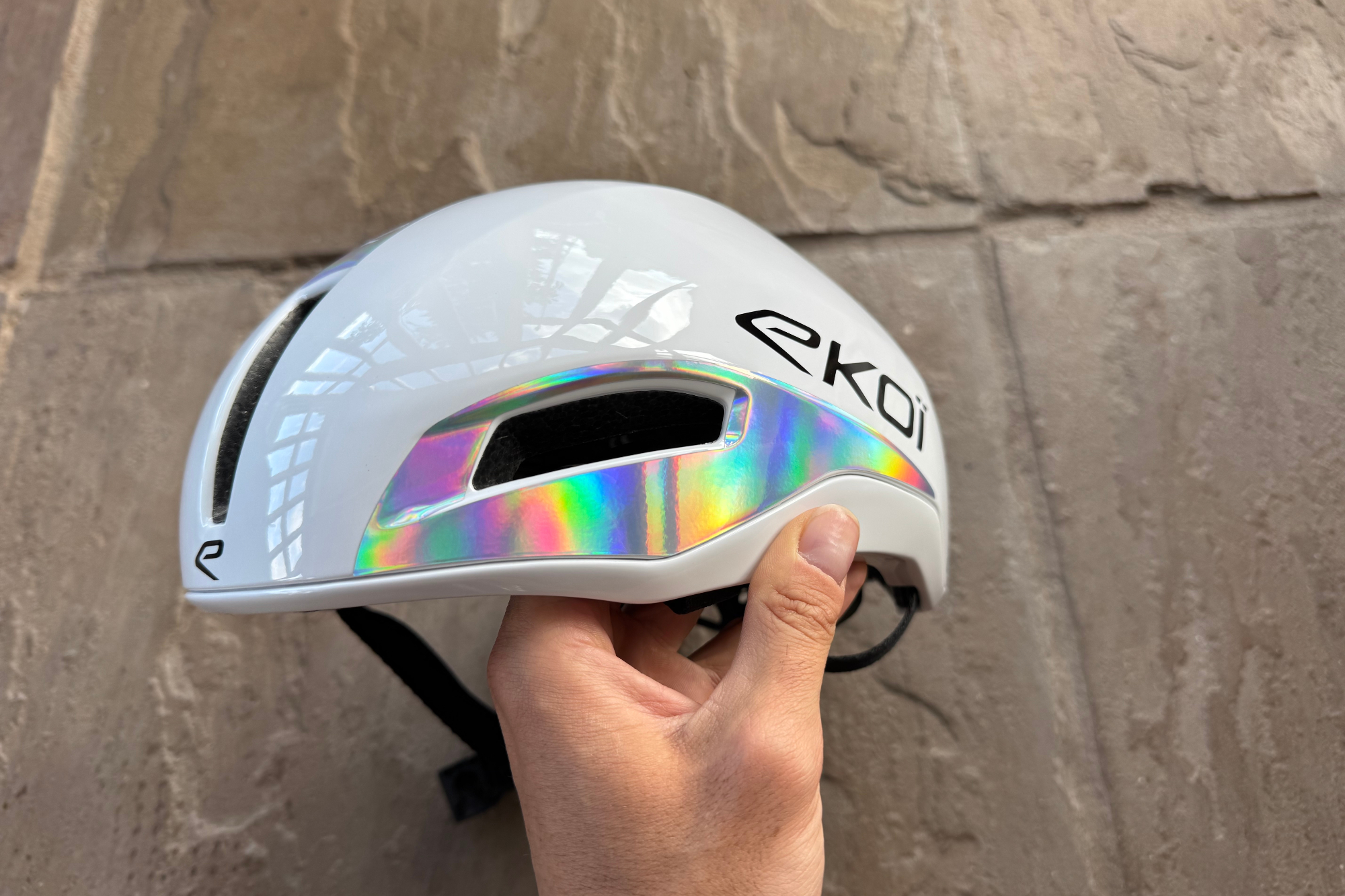
(Image credit: Future / Andy Turner)
As for ventilation, the R Aero performs well beyond 35kph, with higher speeds resulting in higher airflow and better cooling. However at lower speeds it cools pretty well, compared to similar aero helmet competitors. Fully vented helmets are better, of course, but fully aero helmets have often felt warmer. While I haven’t had the warmest conditions to test the helmet in, I have found it has been effective on hilly terrain where my own effort and intensity is high, but airflow is low, such as on steep climbs.
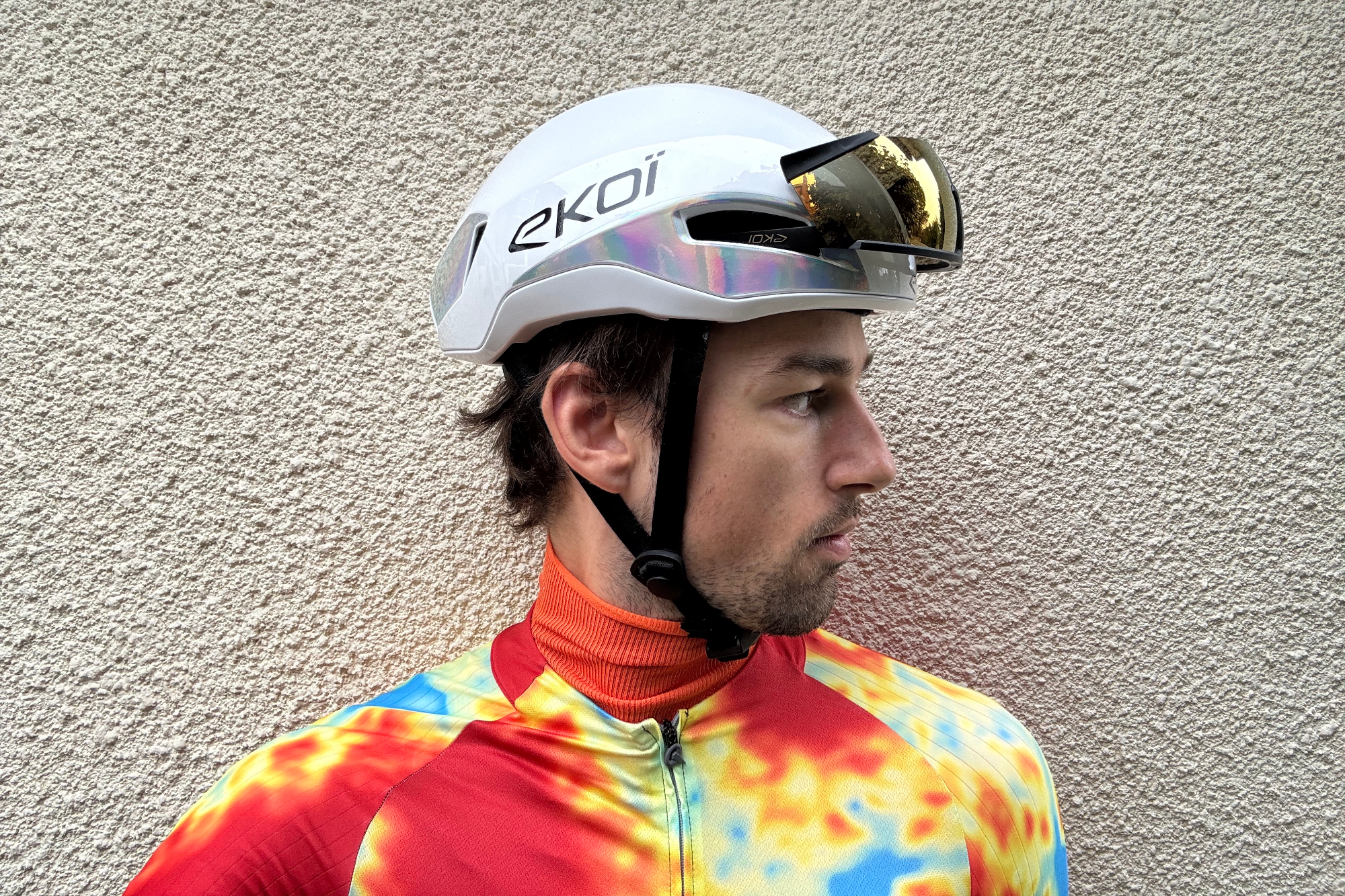
(Image credit: Future / Andy Turner)
In terms of practical features, the new Boa dial at the rear is a very welcome improvement over the old Atop dial. The straps however are far too long, with no way to store any extra; I was forced to cut them and singe the ends. The straps also rub on the back of my ear, and I wasn’t really able to adjust this even with the strap dividers being adjustable. This may just be a personal geometry issue though. The side vents do work well to retain glasses if you need to do so, this ruins aero efficiency of course, but is practical for café stops.
I can’t comment on crash protection. However the R Aero does pass the necessary tests to be sold and used. It lacks specific anti-rotational impact protection systems such as Mips and KinetiCore, but it has passed specific rotational impact testing protocols. There is no Virginia Helmet Safety rating though.
Value & conclusion
There’s no getting around the £340 price tag for this helmet. While the POC Procen Air (£370) and the Kask Nirvana (£320) are similar in price, most other aero helmets do not breach the £300 barrier.
The Van Rysel RCR-F aero helmet is available for £99.99. That’s an outlier in terms of price, but there’s also the MET Manta Mips for £229.99 and the Trek Ballista is £200. Even Specialized comes in cheaper with the S-Works Evade 3 costing £250. All of these helmets have been used to win multiple races at the highest level, as well as performing well in independent aero testing.
With wind tunnel testing it’s difficult to get genuinely comprehensive results over a range of head positions, different riders, different speeds, and YAW angles. That is where Ekoï has, in theory, done a good job of testing the helmet to a degree that may be more representative. But this comes at a cost, as does sponsoring several WorldTour teams to gather even more testing and subjective data. It’s these development costs that help to increase the unit price.
Based on this, there may be a reasonable chance that the Ekoï R Aero is a genuinely good aero performer at a range of speeds and wind angles, making it more likely to be real-world fast for more people. But this is subjective.
Ventilation is decent, broadly on par with competitors, but the Giro Eclipse for example feels a touch cooler to me, but not by a lot. For a dedicated aero helmet, this is a well-ventilated option, and hopefully a fast one.
The R Aero is, in summary, an interesting helmet. Ekoï has been open about the testing procedures as well as the results and reasoning behind the designs, and in my own testing out on the road, it does appear that this helmet is fast across a range of conditions, while managing to have a solid level of ventilation for a helmet with so few vents.
It does lack some refinement to the fit thanks to those pesky long straps, but the rear Boa dial offers superb retention and adjustment, while I also like the Fidlock buckle.
Customisation of the colour inserts and name badge are also nice features with more in the pipeline, but I struggle to justify a price tag that exceeds some far better value options. For out and out performance in both aerodynamics and ventilation, this is an impressive helmet, and I can conclude that those development costs appear to have been well spent.
